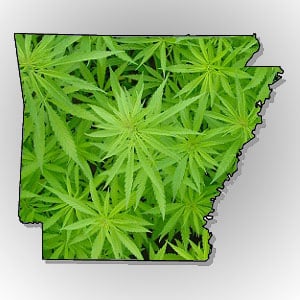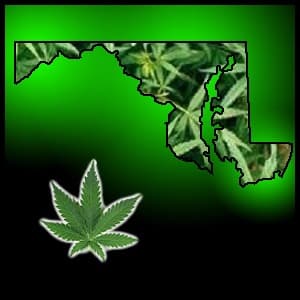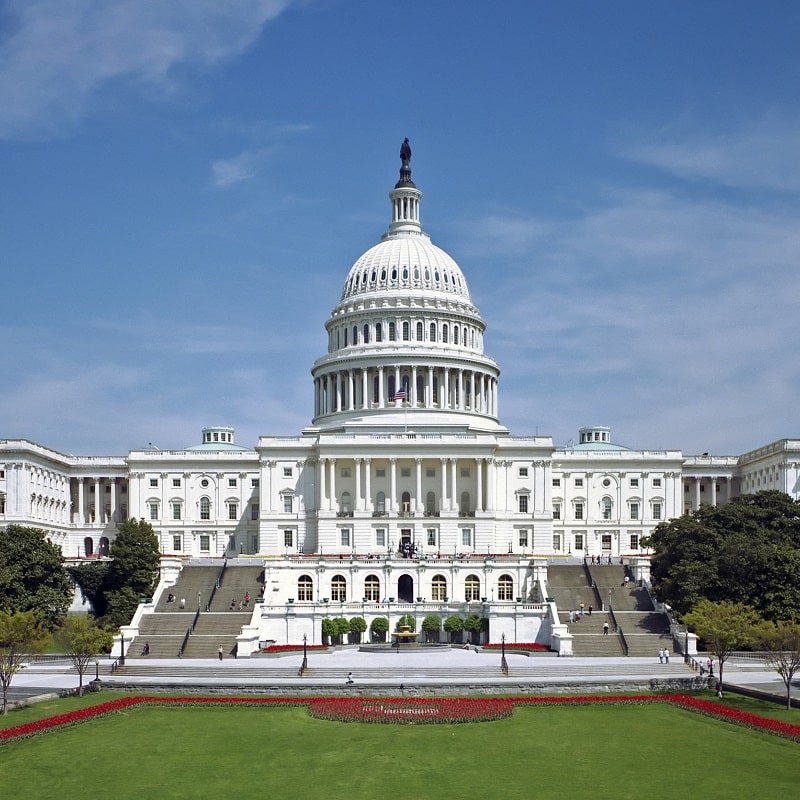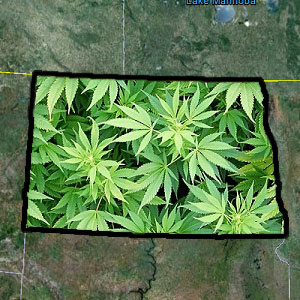 Clarifying Arkansas Medical Marijuana Program Myths
Clarifying Arkansas Medical Marijuana Program Myths
Recently, opponents of the Arkansas Medical Marijuana Act published a flyer citing a good deal of misinformation about medical marijuana and the AMMA. Here’s our response:
1) Medical Marijuana is a backdoor effort to legalize marijuana throughout the state of Arkansas.
Recreational marijuana—its possession, use, distribution, and cultivation—will remain illegal in Arkansas; the same penalties will apply for violations of the law. Arkansans for Compassionate Care‘s goal via the AMMA is to establish a regulatory framework for providing sick and dying patients safe access to an effective medicine they need today—as noted in Section 115:
By adoption of this Act, there is no implied repeal of the existing Arkansas laws criminalizing possession of marijuana for purposes not specified in this act. This act also acknowledges that marijuana use, possession, and distribution for any purpose remain illegal under Federal law.
2) Almost anybody can qualify to grow and use marijuana.
Only patients suffering from one of fifteen debilitating conditions will be allowed to obtain a licensed Arkansas physician’s recommendation to grow and use Medical Marijuana—as noted in Section 102:
(i) Cancer, Glaucoma, positive status for Human Immunodeficiency Virus/Acquired Immune Deficiency Syndrome (HIV/AIDS), Hepatitis C, Amyotrophic Lateral Sclerosis, Tourette’s Disease, Crohn’s Disease, ulcerative colitis, Post Traumatic Stress Disorder (PTSD), Fibromyalgia, agitation of Alzheimer’s Disease or the treatment of these conditions…cachexia or Wasting Syndrome; peripheral neuropathy; intractable pain…treatment or surgical measures for more than 6 months; severe nausea; seizures…or severe and persistent muscle spasms, including those characteristic of Multiple Sclerosis.
3) A doctor’s note for “medical” marijuana is good for a lifetime.
The physician’s written certification that a patient has a qualifying condition is only used to obtain a license from the Arkansas Department of Health—who will then issue a “Registry Identification Card” stating the patient’s status as a Medical Marijuana patient. Pursuant to Section 105, subsection (e)…Registry Identification Cards expire one year after the date of issuance, unless the Physician states in the written certification that he believes the Qualifying Patient would benefit from medical marijuana only until a specified earlier date, then the Registry Identification Card shall expire on that date.
4) Marijuana stores will open.
Unlike “stores”, dispensaries will be entirely non-profit—and will exist solely to provide qualifying, licensed patients with their physician recommended medicine. Pursuant to Section 109, subsection (b) (i): A Nonprofit Dispensary must be operated on a not-for-profit basis for the mutual benefit of its members and patrons.
5) People will grow their own marijuana if they’re more than five miles from a marijuana store.
Pursuant to Section 108, subsection (c)…The Department may not issue more than one Nonprofit Dispensary registration certificate for every twenty-five pharmacies. This strict limitation—one of the more unique features in the AMMA—ensures that there won’t be an overabundance of dispensaries in certain regions, but it also means that qualifying patients in some rural areas will be deprived of access to their physician recommended medicine. The rule—in Secton 103, subsection (a) (ii)—allowing patients or caregivers to grow up to six flowering marijuana plants, measuring 12″ or more in height—is there to ensure that qualifying patients who live more than five miles from a dispensary aren’t left without effective access to the medicine used to treat severe conditions that often limit mobility and bodily function.
6) No prescription required. No professional health-care oversight.
The Arkansas Department of Health will entirely oversee the Arkansas Medical Marijuana program, and will require Written Certifications from licensed Arkansas physicians for qualifying medical conditions, pursuant to Section 102: “Written Certification” means a document signed by a physician stating that in the physician’s professional opinion…the Qualifying Patient has a Qualifying Medical Condition and the potential benefits of the Medical Use of marijuana would likely outweigh the health risks for the Qualifying Patient.
7) No pharmacy necessary.
Non-profit dispensaries inspected and licensed by the Arkansas Department of Health will issue Medical Marijuana only to qualifying patients with a doctor’s recommendation. Because of their non-profit status, dispensaries will actually have more oversight than pharmacies, and unlike pharmacies their numbers will be limited.
8) No limit on the amount of marijuana smoked.
Pursuant to Section 109, subsection (xi): A Nonprofit Dispensary or a Nonprofit Dispensary Agent may not dispense more than 2 1/2 ounces of Usable Marijuana to a Qualifying Patient or to a Designated Caregiver on behalf of a Qualifying Patient during a 15-day period.
9) Landlords will have to accommodate marijuana growth and use by tenants.
Landlords will be allowed to prohibit the smoking of Medical Marijuana by qualified patients, but not the odorless ingestion of edibles or the odorless vaporization of its active ingredients. Pursuant to Section 106, subsection (iv), the AMMA does not require “A landlord to permit a qualified patient to smoke marijuana on any or in any leased property, except that a landlord may not prohibit the Medical Use of marijuana on leased property by a qualified patient through means other than smoking, including…ingestion…or the inhalation through vaporization.
10) Police will have little power to arrest or prosecute marijuana possession and use.
See response #1
11) Employers will be forced to allow marijuana use by employees.
The American with Disabilities Act specifically prohibits employment discrimination based on the presence of lawfully prescribed medication in an employee’s drug screening.
12) Schools will have to accommodate marijuana use by students and teachers.
There is no reference to the Arkansas education system in the Arkansas Medical Marijuana Act. In reference to educators, see response #11; in reference to students and the question of minors being recommended MMJ, pursuant to Section 105, subsection (b) The Department may not issue a Registry Identification Card to a Qualifying Patient who is under 18 years of age unless: (i) The Qualifying Patient’s Physician has explained the potential risks…to a parent, guardian or person having legal custody of the Qualifying Patient; and (ii) A parent, guardian or person having legal custody consents in writing to: (A) Allow the Qualifying Patient’s Medical Use of marijuana; (B) Serve as one of the Qualifying Patient’s Designated Caregivers; and (C) Control the Acquisition of the marijuana, the dosage and the frequency of the Medical Use of marijuana by the Qualifying Patient.
13) If this measure were really about helping sick people, it would have been written just for them. Instead, it was written to allow otherwise healthy people to legally grow and smoke all the marijuana they like.
See responses #1, 2, and 6.
14) If medical marijuana was good medicine, groups like the American Medical Association and the American Cancer Society would endorse these measures. By and large, the medical community simply does not support state marijuana initiatives.
That’s not true. A large and growing number of medical and health organizations have recognized marijuana’s medical value.* And in 2009, the AMA – the largest and traditionally the most cautious and conservative physician organization – made a major shift in its position, calling on the federal government to reconsider marijuana’s status as a Schedule I drug, which bars medical use under federal law.
According to the AMA’s own report, “Results of short term controlled trials indicate that smoked cannabis reduces neuropathic pain, improves appetite and caloric intake especially in patients with reduced muscle mass, and may relieve spasticity and pain in patients with multiple sclerosis.” They recommend the Federal Government reschedule marijuana to allow for more studies, but sick and dying patients in Arkansas don’t have time to wait for our massive Federal bureaucracy to establish a regulatory system for their medicine when their conditions are worsening by the day.
Surveys of physicians also show strong support for medical marijuana. For example, a 2005 national survey of physicians conducted by HCD Research and the Muhlenberg College Institute of Public Opinion found that 73% of doctors supported use of marijuana to treat nausea, pain, and other symptoms associated with AIDS, cancer, and glaucoma. 56% would recommend medical marijuana to patients if permitted by state law, even if it remained illegal under federal law.
According to the American Cancer Society’s website, “Medical researchers have isolated substances from the plant (cannabinoids) that can be used in precise doses alone and in combinations with other medicines to achieve more predictable effects. Certain cannabinoid drugs have been approved by the US Food and Drug Administration (FDA) to relieve nausea and vomiting and increase appetite in people with cancer and AIDS. Other marijuana extracts are still being tested. THC and marijuana are promoted to relieve pain, control nausea and vomiting, and stimulate appetite in people with cancer and AIDS. Researchers also report that THC decreases pressure within the eyes, therefore reducing the severity of glaucoma.”
15) Isn’t there already a pill for that? What about marinol?
It’s not as effective and the last thing a nauseated patient needs is a pill to swallow.
Marijuana itself isn’t available in pill form. THC, the component responsible for marijuana’s “high,” is sold as the prescription pill Marinol (with the generic name “dronabinol”). But people who use the pill find that it commonly takes an hour or more to work, while vaporized or smoked marijuana takes effect almost instantaneously. They also find that the dose of THC they have absorbed (in the pill form) is often either too much or too little. Because slow and uneven absorption makes oral dosing of THC so difficult, The Lancet Neurology wrote in May 2003, “Oral administration is probably the least satisfactory route for cannabis.” In its 2008 position paper on medical marijuana, the American College of Physicians noted, “Oral THC is slow in onset of action but produces more pronounced, and often unfavorable, psychoactive effects than those experienced with smoking.”
As Mark Kris, M.D., one member of an expert panel convened by the National Institutes of Health in 1997 to review the scientific data on medical marijuana, explained during the group’s discussion on February 20, 1997: “[T]he last thing that [patients] want is a pill when they are already nauseated or are in the act of throwing up.”
Marijuana contains about 80 active cannabinoids in addition to THC. Research has shown that these other compounds contribute significantly to marijuana’s therapeutic effects. For example, cannabidiol (CBD) has been shown to have anti-nausea, anti-anxiety, and anti-inflammatory actions, as well as the ability to protect nerve cells from many kinds of damage. CBD also moderates THC’s effects so patients are less likely to get excessively “high.” Other cannabinoids naturally contained in marijuana have also shown significant therapeutic promise.









